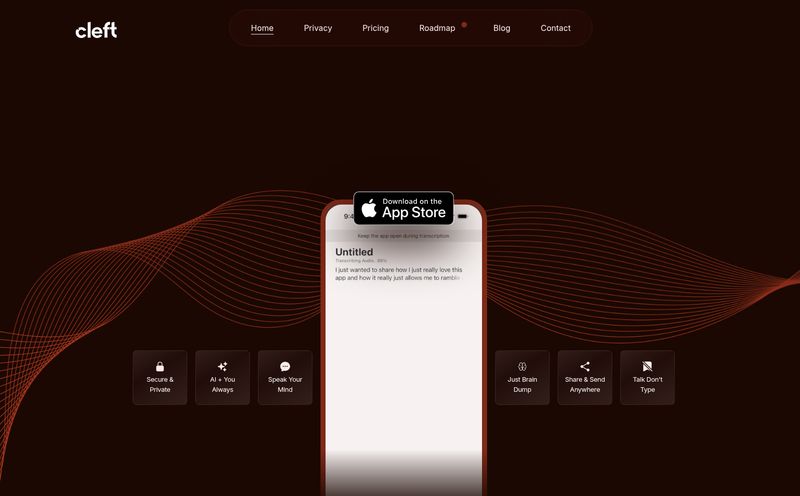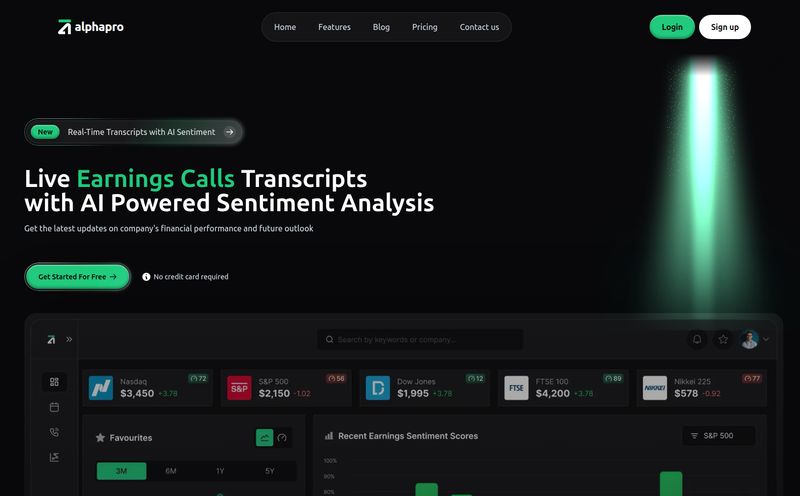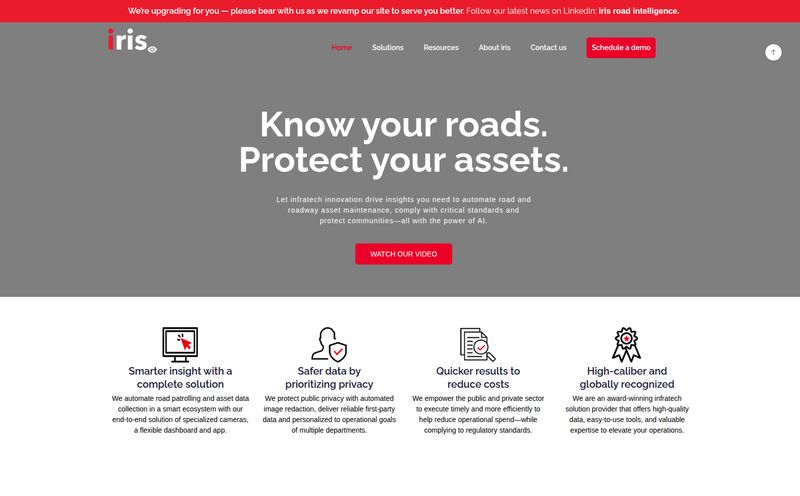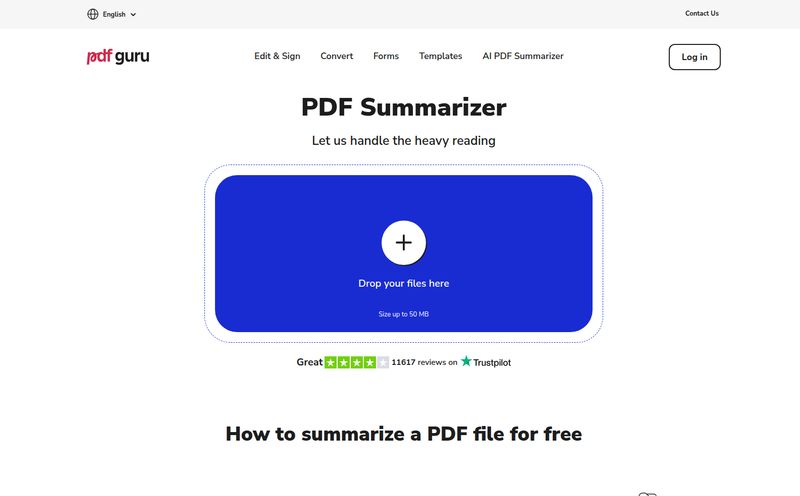I’m a sucker for a good notebook. You know the feeling—the crisp, empty pages, the smooth glide of a new pen. For years, my shelves have been groaning under the weight of Moleskines, Leuchtturms, and a dozen other brands I bought on a whim. They’re filled with client meeting notes, half-baked article ideas, and diagrams that made sense at the time. They are, for all intents and purposes, graveyards for brilliant ideas.
Finding a specific note is like an archeological dig. And let's be honest, my handwriting looks like a doctor's prescription written during an earthquake. So when I stumbled upon a tool called Notebook Digitizer, with its simple promise—"Write by Hand, Store it Digitally"—my interest was definitely piqued. Could this be the bridge between the analog world I love and the digital world I need to function in? I had to find out.
So, What is Notebook Digitizer, Really?
At first glance, you might think it's just another scanner app. We've seen those before, right? Apps that take a picture of a page and turn it into a PDF. That's fine, but it’s not searchable. It’s just a picture of your messy notes.
Notebook Digitizer is different. It uses AI and computer vision to not just photograph your notes, but to actually read them. It performs AI-powered transcription, turning your handwritten scribbles into clean, digital, and most importantly, searchable text. It’s like having a tiny, diligent scribe living in your phone, ready to go.
The whole idea is to let you keep the creative, free-flowing benefits of writing by hand without the massive downside of having your ideas locked away on paper. Sounds pretty good, right?
How Does This Thing Actually Work?
The process itself seems almost deceptively simple, which I appreciate. No one needs another complicated piece of tech in their life. The website breaks it down into three steps:
- Scan the Code: You start by scanning a QR code, which presumably gets you into their web app on your phone. Easy enough.
- Scan Your Notebook: This is the core of the operation. You use your phone's camera to snap pictures of your notebook pages. The site says you can scan several pages in one go, which is a huge plus. I can't be bothered to scan 50 pages one by one.
- Access the Transcription: Almost instantly, your digitized notes and their AI-generated transcriptions appear in your account, accessible on your computer.
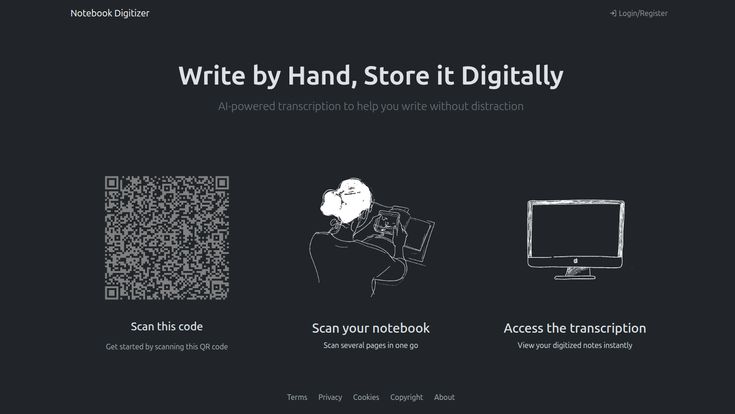
Visit Notebook Digitizer
This flow makes sense. Brainstorm in your notebook during the day, do a quick 5-minute scan session in the evening, and boom—all your thoughts are indexed and ready for when you actually need them.
The Big Question: AI Transcription Accuracy
Here’s the million-dollar question. Can it actually read my terrible handwriting? This is where any OCR (Optical Character Recognition) tool lives or dies. We've all seen auto-captions on YouTube butcher a sentence, and that's with clean audio. Handwriting is a whole other beast.
The creators are upfront that transcription accuracy can vary. I respect that honesty. AI is not magic, and it’s going to struggle with particularly unique or messy scrawls. In my own testing with similar tools, I've found that success often depends on a few things:
- Clarity: Cursive is harder than print.
- Consistency: The more consistent your letter shapes are, the better.
- The Pen and Paper: Good contrast (dark ink on light paper) makes a huge difference. A faint pencil on off-white paper? Good luck.
My verdict? For most of my standard meeting notes, which are a mix of print and frantic cursive, I’d expect the transcription to be about 80-90% accurate. That’s not perfect, but it’s more than enough to make the text searchable. I don’t need a word-for-word perfect document; I just need to find the paragraph where I mentioned “Q3 budget projections.” For that, a tool like this is a godsend.
Who Is This For? (And Who It Isn't For)
I can immediately see a few groups of people who would get a ton of value from Notebook Digitizer.
It's a dream for students who still take notes by hand in lectures. Studies have shown that writing by hand can improve memory and comprehension, but being able to search those notes for exam prep is the holy grail. It’s also great for writers, designers, and other creatives who brainstorm best on paper but need to organize those ideas into digital outlines or project plans.
Finally, any professional who finds themselves in meetings with a notebook instead of a laptop will love this. You look engaged in the meeting, not like you're answering emails, and you still get all the digital benefits afterward.
Who isn't it for? If you’re already a digital native who's perfectly happy typing on a laptop or writing on an iPad with an Apple Pencil, you probably don't need this. This is a tool for bridging a specific gap, not for replacing a fully digital workflow.
Let's Talk Money: The Credit System Explained
Okay, pricing. This is often where I check out with new tools, especially if they demand another monthly subscription. But Notebook Digitizer does something I really like: a pay-as-you-go credit system. You only pay for what you use.
Here’s the breakdown:
| Credits | Price | Cost Per Page |
|---|---|---|
| 20 | $1 | 5¢ |
| 100 | $3 | 3¢ |
| 500 | $8 | 1.6¢ |
| 1000 | $10 | 1¢ |
Frankly, this pricing is incredibly reasonable. If you buy the largest package, you're paying just one cent per page. To digitize and transcribe an entire 100-page notebook would cost a single dollar. One dollar! The amount of time that would save me in manual typing is... well, it's worth way more than a dollar. I appreciate any company that doesn't try to lock me into a recurring $10/month fee for a service I might only use sporadically.
The Good, The Bad, and The Scribbly
The Good Stuff
The main advantage is obvious: it marries the tactile joy of paper with the ruthless efficiency of digital search. You get the best of both worlds. The AI-powered transcription is the killer feature, and the fact that it saves so much time is a massive win. And the pay-as-you-go pricing? Chef's kiss. It shows they're confident in their product's value.
The Not-So-Good Stuff
Look, no tool is perfect. The biggest hurdle is that you still have to perform an action: scanning. It’s an extra step in your workflow that you have to remember to do. Also, as mentioned, the transcription won’t always be 100% perfect. You might have to make a few manual corrections if you need a pristine copy, and it probably won't know what to do with your complex diagrams or doodles. But for text-based notes, thats less of an issue.
My Final Verdict: Is It Worth It?
So, is Notebook Digitizer a gimmick or a game-changer?
In my opinion, it’s a brilliant solution for a very specific, but very common, problem. It's not trying to replace your entire productivity system. It's not a new version of Evernote or Notion. It is a simple, effective bridge. It does one thing—turn your analog notes into searchable digital text—and based on its presentation and pricing, it seems to do it well.
For a few bucks, the ability to rescue the hundreds of ideas currently dying in my notebook collection seems like an absolute bargain. I've spent more on a single pen that I ended up losing. This feels like a much better investment in my own ideas.
Frequently Asked Questions
- What if my handwriting is really, really bad?
- The AI is designed to read a wide variety of handwriting, but there's a limit. The clearer you write, the better the results will be. I'd suggest trying the smallest $1 package to test it on your own handwriting before committing to more.
- Does it work with any kind of notebook?
- Yes! Since it's using your phone's camera, it doesn't require any special paper or a proprietary notebook. You can use your favorite Moleskine, a cheap legal pad, or even a napkin sketch (though results may vary!).
- Is there a monthly subscription?
- Nope. And that’s a huge plus. It’s a purely credit-based, pay-as-you-go system. You buy credits for page scans and use them whenever you need them. No recurring charges.
- Can I edit the transcriptions after they're processed?
- While the site doesn't specify, most platforms like this allow you to copy the text. From there, you could paste it into any word processor or note-taking app (like Google Docs, Word, Notion, etc.) to make edits and corrections.
- How does it handle diagrams, doodles, or drawings?
- The primary feature is text transcription. The AI will likely ignore or attempt to interpret drawings as text, which could lead to weird results. You will still have the scanned image of the page, so your diagrams aren't lost, but they won't be converted into an editable format.
- Is my data secure?
- Anytime you upload data, this is a valid concern. You should always check the platform's Privacy Policy and Terms of Service to understand how your data is stored and used. For sensitive notes, this is a critical step.
A Bridge to a Better Workflow
In the end, Notebook Digitizer isn't trying to force you to abandon the pen and paper you love. It’s offering a helping hand to bring your analog thoughts into the digital age. For anyone with a stack of notebooks and a desire for better organization, this tool isn't just a novelty; it might just be the missing piece of your productivity puzzle.
Reference and Sources
- A 2017 study in Frontiers in Psychology discussing the cognitive benefits of handwriting.
- PCMag's overview of OCR Software for context on the technology.
